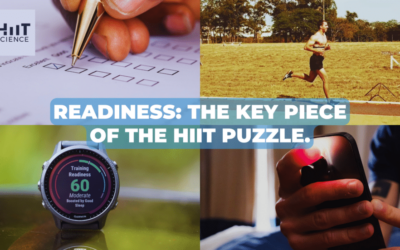Introduction
Repeated-sprint training (RST) is a unique and attractive HIIT format for preparing football code athletes, such as soccer, rugby union, rugby 7s and rugby league players, for competition.The ability to perform repeated sprints (i.e. 2 or more maximum effort bouts of < 10s duration interspersed with < 60s recovery) is thought to be an important performance construct of team-sport match-play.But evidence suggests that match occurrence of bouts (and the number of efforts within them) is low (1,2). That doesn’t mean we should throw the baby out with the bathwater, though! Repeated-sprint training is highly effective for developing aerobic capacity, high-intensity intermittent running ability and speed (3,4), all of which have implications for sports performance and injury resilience (5,6,7,8). Repeated-sprint training might also have transfer effects to the performance of repeated high-intensity efforts (i.e. inclusion of acceleration and/or collisions [6,9,10]), which do appear more frequently during football competition.
In this blog post, we offer insight into the potential integration of RST in the football codes.We draw on the scientific evidence and our practical experiences working in soccer, rugby union and rugby league to present a training programme and several strategies for its implementation. The programme is discussed with respect to its context of use, the principles of training and the integration of RST across a typical team sport schedule. Considerations for pre-, during- and post-training are also outlined, with a view to implementing safe and effective RST for players.
What’s the Science say?
Repeated sprinting stresses the need to run at maximum intensity as well as the ability to recover from such bouts. The substantial aerobic, anaerobic and neuromuscular responses to RST justify its classification as a Type 4–5 HIIT protocol (11). This is why we like to think of RST as a multi-component training method.RST has been demonstrated to have rapid beneficial effects on performance, with a little as 6 sessions over 2 weeks shown to improve high-speed running abilities (12).The early improvements in aerobic-related performance are likely due to enhanced peripheral oxygen extraction by skeletal muscle and increased mitochondrial enzyme activity, which are associated with increased fuel use efficiency (13,14). Initial improvements in speed (faster sprint times) are likely due to neural adaptations (i.e. motor-unit synchronization, recruitment and firing frequency [15]), but longer-term RST may elicit morphological changes, similar to other short sprint methods (16).
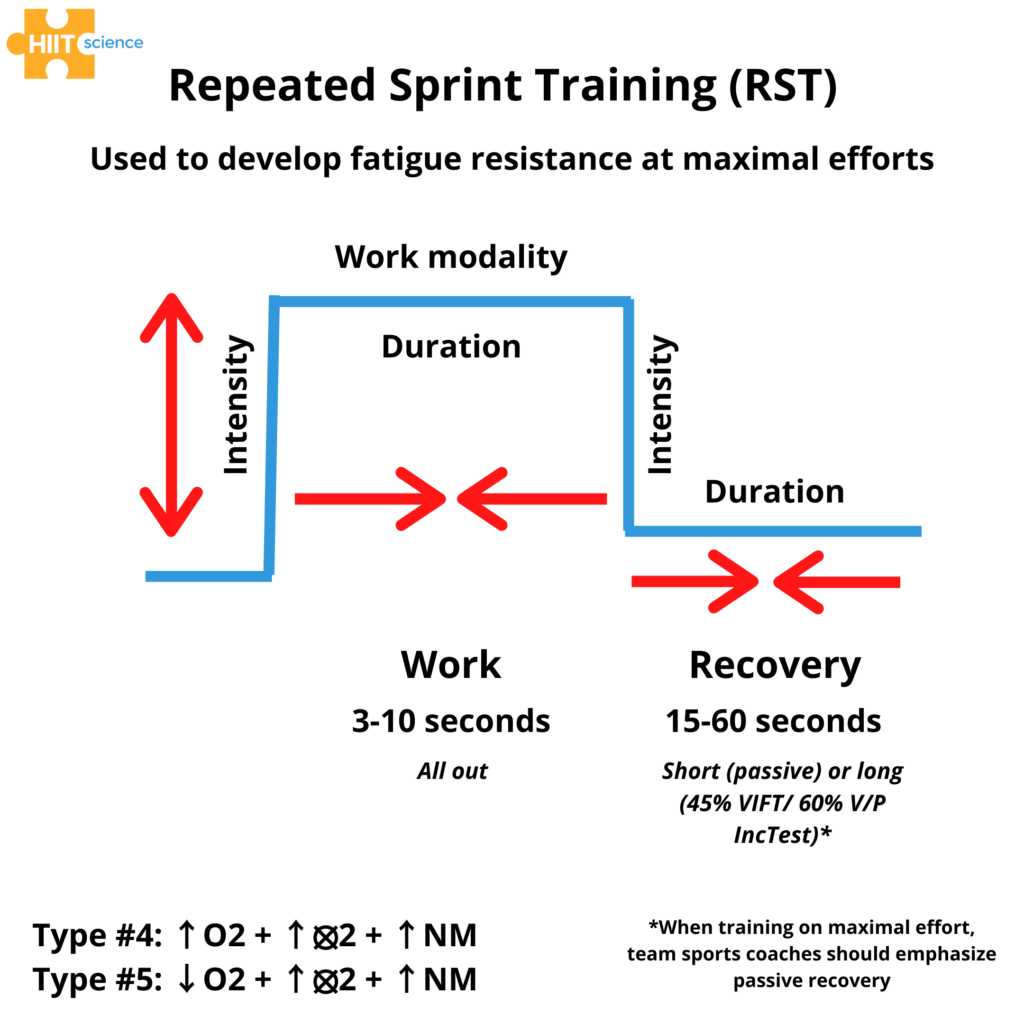
Figure 1. Repeated-sprint training and its recommended range of intensities, durations, and recovery characteristics
Typically, an RST session will consist of 2–4 sets of 6–8 sprint repetitions, each lasting 3–10 s in the form of straight-line or change-of-direction efforts, with ~15–60 s and 2–4 minutes of rest between sprints and sets, respectively.Manipulation of these programming variables can be used to alter the acute and chronic responses of RST, which may depend on the overall goal/outcome, phase of training, individual needs and contextual constraints.While some adjustments can be evidence-based, the reality of programming RST in the real world is that most decisions will rely on a practitioner’s domain knowledge (training principles and physiological or biomechanical theory) and experience. Hence the reason to know your HIIT Science principles – so you can adjust the training as needed, on the fly.
Setting the Scene: When Could RST be Appropriate?
The need for running-based HIIT to optimize physical performance in team-sports often comes as a trade-off with time needed for implementation. This can be a major barrier amidst packed training schedules that include football-specific and gym-based strength training needs. Technical-tactical training takes presidency and recovery (particularly during the in-season phase) must also be factored in.A further benefit of RST is the low-volume and time-efficient nature of programmes.As mentioned, multi-component performance improvements can occur rapidly, and RST sessions can generally be completed within 15–20 minutes.
There are several situations where short RST blocks are feasible and worthwhile.In most cases, these windows of opportunity present during ‘Return-to-performance’ phases; namely a period of progressive re-loading following training/competition absence or reduced training load (Figure 2).
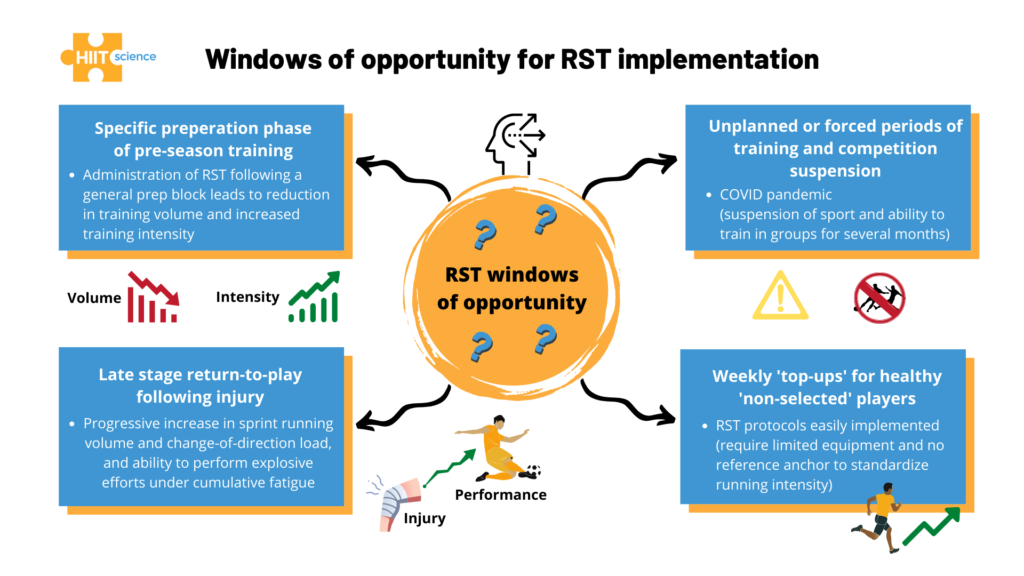 Figure 2. Windows of opportunity for RST implementation.
Figure 2. Windows of opportunity for RST implementation.
An RST Programme
Tables 1 and 2 outline the details of a six-session RST programme. Each session consists of 3 or 4 sets of 6 to 7 reps (volume) of ‘all-out’ efforts over various short distances (~3–7 seconds; intensity), with 20 seconds and 2.5–4 minutes between sprints and sets, respectively. This establishes an intra-set work-to-rest ratio of around 1:3–7. To allow for adequate recovery between sessions, as well as integration with the training schedule, two RST sessions per week seem appropriate (frequency). Training progression and overload are achieved through sprint volume, with an increase in sprint effort distance and number of sets. A reduction in inter-set rest periods across the six sessions is also programmed, with a view to increase the aerobic demands in response to training adaptation. A mixture of straight-line and shuttle efforts within each set of sprints can provide a more varied stimulus (17), with the additional eccentric loading imposed by decelerating in shuttle-sprints adding to the potential benefits of RST (18).There is limited evidence to support one method as being more effective for improving team-sport-specific physical performance (12; 19), but we have found straight line RST to elicit higher internal and external training loads when compared with volume-matched shuttle protocols (12; 20).This could in part be due to the necessity to produce force at higher velocities for a longer duration in straight-sprints, which is consistent with increased lower-limb tissue stress and strain when sprinting at near maximal velocity. Therefore, in the interest of appropriate exercise progression and a graded exposure to very-high- and maximal-velocity running, we opted to use more shuttle-based efforts at the beginning of our programme and more straight-line efforts towards the end (Tables 1 and 2). Both shuttle and straight-line efforts are approximately volume (time)-matched within a session.
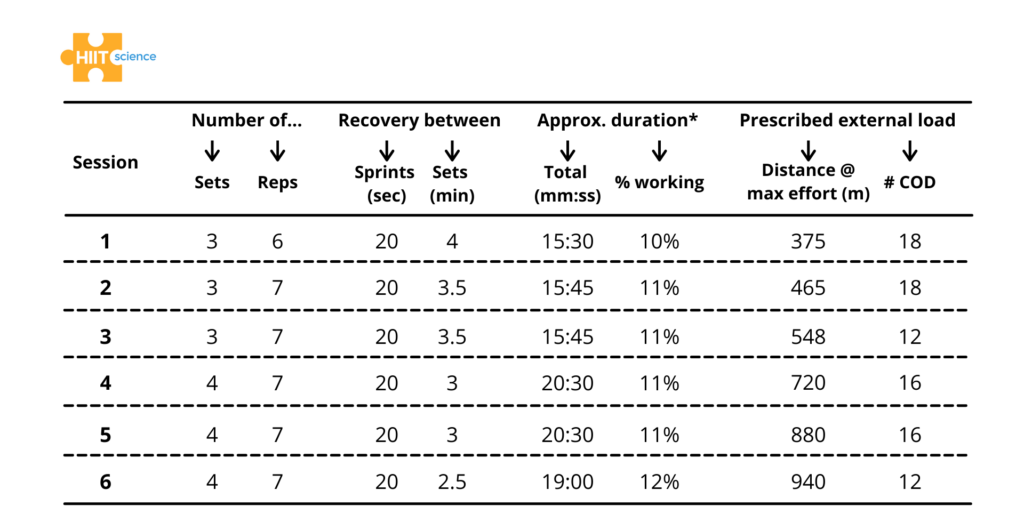 Table 1. Six-session RST programme progression.*based on a single effort lasting 3–7 seconds. CoD = change of direction.
Table 1. Six-session RST programme progression.*based on a single effort lasting 3–7 seconds. CoD = change of direction.
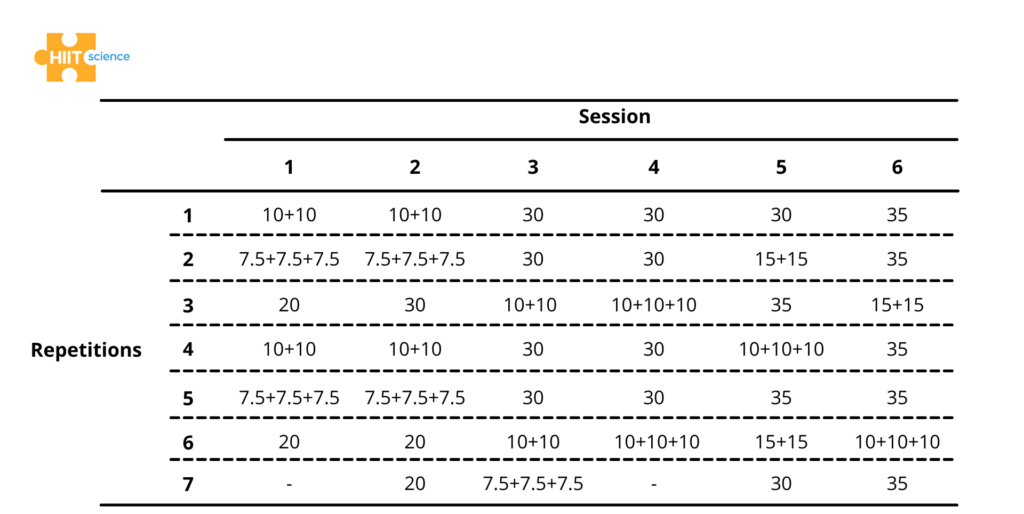 Table 2. Repetition efforts (m) across the six-session RST program. The + symbol indicates a change of direction through 180°. For very heavy athletes (e.g., rugby union front 5), sprint efforts >20 m can be reduced by 5–10 m, or substituted for a shuttle effort, depending on their training history and normal exposure to straight line max velocity running.
Table 2. Repetition efforts (m) across the six-session RST program. The + symbol indicates a change of direction through 180°. For very heavy athletes (e.g., rugby union front 5), sprint efforts >20 m can be reduced by 5–10 m, or substituted for a shuttle effort, depending on their training history and normal exposure to straight line max velocity running.
Similarly, sport-specific actions requiring no equipment can be incorporated before, during, or after sprint efforts (Table 3).The objective of adding these actions is not simply to make RST ‘look’ more like the sport, but rather to:
- Provide a further physiological stimulus from high-intensity low-velocity movements
- Execute movement patterns that are transferable to sport-specific actions
- Rehearse closed movement skills under accumulating fatigue
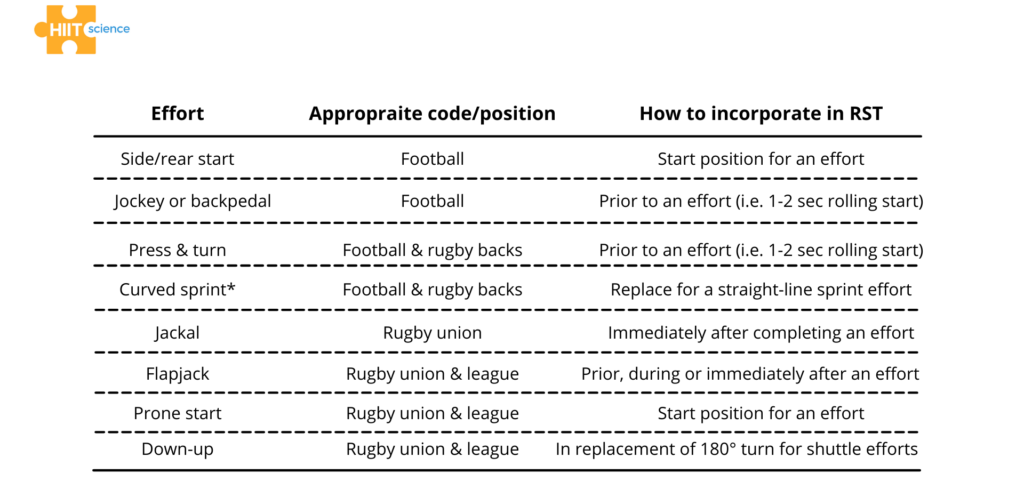 Table 3. Sport-specific high-intensity efforts that can be included as part of repeated sprint efforts.*Placing a cone at a 1.3, 2 or 2.3 m offset from the middle of a 20, 30, or 35 m straight-line effort (respectively) achieves a total running angle of ~30° degrees. Assuming players reach a ‘sprinting’ speed (~24 km·h-1) after 15–20 m, approximately 5–20° of this curve is covered while. This is typical to the curved sprinting patterns reported in professional soccer (21).
Table 3. Sport-specific high-intensity efforts that can be included as part of repeated sprint efforts.*Placing a cone at a 1.3, 2 or 2.3 m offset from the middle of a 20, 30, or 35 m straight-line effort (respectively) achieves a total running angle of ~30° degrees. Assuming players reach a ‘sprinting’ speed (~24 km·h-1) after 15–20 m, approximately 5–20° of this curve is covered while. This is typical to the curved sprinting patterns reported in professional soccer (21).
Pre and Post-Programme Considerations
Preparing the body for bouts of sprint work is important to mitigate the risk of adverse incidents such as hamstring strain injuries.A pre-programme ‘block’ consisting of strength, coordination, and explosive running exercises might therefore be appropriate to build tissue strength and tolerance to the mechanical loading associated with sprinting and change-of-direction at high intensities (23,24).The potentiation effects of a progressive RAMP (Raise, Activate, Mobilise, Potentiate) style ‘warm-up’ can also help prepare for subsequent session demands (25). Table 4 outlines a simple RAMP protocol for RST.
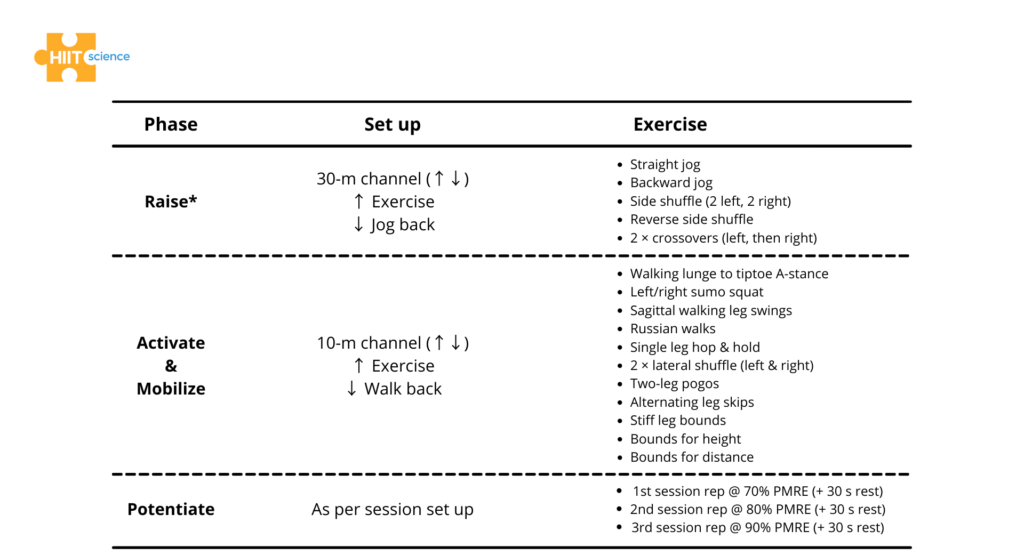 Table 4. A progressive RAMP warm-up for RST.
Table 4. A progressive RAMP warm-up for RST.
If RST is implemented in the latter stages of a return-to-performance plan, players may benefit by completing previous blocks of isolated training to improve single ‘sprint’ performance (e.g., acceleration, maximum velocity running, deceleration and change of direction ability).Moreover, they should benefit by developing the ability to recover between efforts—such as through improved aerobic power (e.g., central adaptations such as cardiac output, which are typical to HIIT type 1–2: [11]) and muscle buffering capacity (which are typical to HIIT type 3–4 [11]). This would also follow suit with phase potentiation and traditional periodized approaches, whereby a reduction in volume (e.g., repetition, set or total training time) is met with an increase in intensity (e.g., velocity) as return-to-performance nears. Little is known concerning the minimum effective RST dose for maintaining adaptations after a targeted training block.
For running-based sprint-interval training protocols (SIT), some evidence suggests that as little as one session per week is enough to preserve any previously-induced gains in fitness (27).The addition of maintenance/taper sessions following an initial 6-session RST development block might therefore be beneficial when transitioning to other forms of training or phases (e.g., team technical–tactical, in-season, etc.). This could be useful during the early stages of return-to-play for injured players and would require only 2–3 sets of 6 efforts once per week.
An Integrated Approach
This RST programme has so far been discussed as an isolated training session, which is the typical approach presented by RST research.In reality, practitioners seldom have the opportunity to complete RST uninterrupted, or even as a standalone session component.There may be scope to incorporate technical drills around RST (or vice versa). This might include low-to-moderate effort exercise as a form of between-set passive recovery (e.g., passing slalom, handling channels, etc) or the use of game-based drills (e.g., small-sided, possession, attack vs defence, etc) that provide a further aerobic, anaerobic and neuromuscular stimulus.
While the efficacy of these integrated approaches are yet to be evidenced, we have had positive experiences from being creative and involving technical coaches in the design of RST as a way of creating buy-in from the coaching staff, whilst improving ecological validity.Finally, when equipment is available and feasible to incorporate within RST, some of the sport-specific actions from Table 3 can be replaced with better alternatives. An obvious example is the inclusion of tackle bags and shields for the rugby codes to better simulate the physiological demands associated with collisions and static exertion efforts.
About the authors
Dr Shaun McLaren Shaun is a strength and conditioning coach and sport scientist from Middlesbrough in the UK. After a spell working with individual sports (middle distance running, cycling, rowing, swimming, judo and badminton), he went on to roles with Newcastle Falcons, Nottingham Rugby, Hartlepool United, and England Rugby League. Shaun is currently an independent sports performance consultant, having provided service to organisations such as Brisbane Broncos Rugby League, The Premier League, Pro Football Support and Playermaker, to name a few. As a practitioner and researcher, his main areas of interest are the programming, delivery, monitoring and evaluation of strategies to improve sports performance and athlete health. Follow Shaun on Twitter: @Shaun_McLaren1, or find out more about his research at ReserchGate and Google Scholar.
Dr Jonathan Taylor
Shaun is a strength and conditioning coach and sport scientist from Middlesbrough in the UK. After a spell working with individual sports (middle distance running, cycling, rowing, swimming, judo and badminton), he went on to roles with Newcastle Falcons, Nottingham Rugby, Hartlepool United, and England Rugby League. Shaun is currently an independent sports performance consultant, having provided service to organisations such as Brisbane Broncos Rugby League, The Premier League, Pro Football Support and Playermaker, to name a few. As a practitioner and researcher, his main areas of interest are the programming, delivery, monitoring and evaluation of strategies to improve sports performance and athlete health. Follow Shaun on Twitter: @Shaun_McLaren1, or find out more about his research at ReserchGate and Google Scholar.
Dr Jonathan Taylor
 Jonathan is a Lecturer in Sport and Exercise at Teesside University and is a BASES Accredited Sport and Exercise Scientist. He recently returned to academia following a period working in Professional soccer within the EPL and EFL. Jonathan has also supported athletes on a consultancy basis at recreational through to international level from various other sports over the last decade, including; middle/long distance running, cycling, rowing, triathlon, Amateur Boxing and Wheelchair racing. His PhD explored the use of RST in the development of soccer specific fitness, and he has published works in the area of conditioning soccer players. In addition to his academic and professional experiences, Jonathan also represented Great Britain and NI in athletics (5000m) and cross-country running at the European/World level. Follow Jonathan on Twitter: @JTaylor45, or find out more about his research at ReserchGate and Google Scholar.
Jonathan is a Lecturer in Sport and Exercise at Teesside University and is a BASES Accredited Sport and Exercise Scientist. He recently returned to academia following a period working in Professional soccer within the EPL and EFL. Jonathan has also supported athletes on a consultancy basis at recreational through to international level from various other sports over the last decade, including; middle/long distance running, cycling, rowing, triathlon, Amateur Boxing and Wheelchair racing. His PhD explored the use of RST in the development of soccer specific fitness, and he has published works in the area of conditioning soccer players. In addition to his academic and professional experiences, Jonathan also represented Great Britain and NI in athletics (5000m) and cross-country running at the European/World level. Follow Jonathan on Twitter: @JTaylor45, or find out more about his research at ReserchGate and Google Scholar.
References
- Taylor JM, Macpherson TW, Spears IR, Weston M. Repeated sprints: An independent not dependent variable. Int J Sports Physiol Perform. 2016;11(5):693–6. DOI: 10.1123/ijspp.2016-0081.
- Schimpchen J, Skorski S, Nopp S, Meyer T. Are “classical” tests of repeated-sprint ability in football externally valid? A new approach to determine in-game sprinting behaviour in elite football players. J Sports Sci. 2016;34(6):519–26. DOI: 10.1080/02640414.2015.1112023.
- Bishop D, Girard O, Mendez-Villanueva A. Repeated-sprint ability—Part II. Sports Med. 2011;41(9):741–56. DOI: 10.2165/11590560-000000000-00000.
- Taylor J, Macpherson T, Spears I, Weston M. The effects of repeated-sprint training on field-based fitness measures: a meta-analysis of controlled and non-controlled trials. Sports Med. 2015;45(6):881–91. DOI: 10.1007/s40279-015-0324-9.
- Iaia FM, Ermanno R, Bangsbo J. High-intensity training in football. Int J Sports Physiol Perform. 2009;4(3):291–306. DOI: 10.1123/ijspp.4.3.291.
- Austin DJ, Gabbett TJ, Jenkins DJ. Repeated high-intensity exercise in a professional rugby league. The J Strength Cond Res. 2011;25(7):1898–904. DOI: 10.1519/JSC.0b013e3181e83a5b.
- Faude O, Koch T, Meyer T. Straight sprinting is the most frequent action in goal situations in professional football. J Sports Sci. 2012;30(7):625–31. DOI: 10.1080/02640414.2012.665940.
- Kalkhoven JT, Watsford ML, Impellizzeri FM. A conceptual model and detailed framework for stress-related, strain-related, and overuse athletic injury. J Sci Med Sport. 2020 (In Press). DOI: 10.1016/j.jsams.2020.02.002.
- McLaren SJ, Weston M, Smith A, Cramb R, Portas MD. Variability of physical performance and player match loads in professional rugby union. J Sci Med Sport. 2016;19(6):493–7. 10.1016/j.jsams.2015.05.010.
- Serpiello FR, Duthie GM, Moran C, Kovacevic D, Selimi E, Varley MC. The occurrence of repeated high acceleration ability (RHAA) in elite youth football. Int J Sports Med. 2018;39(7):502–7. DOI: 10.1055/a-0608-4738.
- Laursen PB. Buchheit M. Science and Application of High-Intensity Interval Training (HIIT): Solutions to the Programming Puzzle. 2018: Human Kinetics; 2019.
- Taylor JM, Macpherson TW, McLaren SJ, Spears I, Weston M. Two weeks of repeated-sprint training in soccer: to turn or not to turn? Int J Sports Physiol Perform. 2016;11(8):998–1004. DOI: 10.1123/ijspp.2015-0608.
- Gibala MJ, Little JP, Van Essen M, Wilkin GP, Burgomaster KA, Safdar A, Raha S, Tarnopolsky MA. Short‐term sprint interval versus traditional endurance training: similar initial adaptations in human skeletal muscle and exercise performance. J Physiol. 2006;575(3):901–11. DOI: 10.1113/jphysiol.2006.112094.
- Gibala MJ. Physiological basis of interval training for performance enhancement. Exp Physiol. 2020 (In Press). DOI: 10.1113/EP088190.
- Ross A, Leveritt M, Riek S. Neural influences on sprint running. Sports Med. 2001;31(6):409–25. DOI: 10.2165/00007256-200131060-00002.
- Ross A, Leveritt M. Long-term metabolic and skeletal muscle adaptations to short-sprint training. Sports Med. 2001;31(15):1063–82. DOI: 10.2165/00007256-200131150-00003.
- Buchheit M, Bishop D, Haydar B, Nakamura FY, Ahmaidi S. Physiological responses to shuttle repeated-sprint running. Int J Sports Med. 2010;31(6):402–9. DOI: 10.1055/s-0030-1249620.
- Howatson G, Milak A. Exercise-induced muscle damage following a bout of sport specific repeated sprints. J Strength Cond Res. 2009;23(8):2419–24. DOI: 10.1519/JSC.0b013e3181bac52e.
- Beato M, Coratella G, Bianchi M, Costa E, Merlini M. Short-term repeated-sprint training (straight sprint vs. changes of direction) in soccer players. J Hum Kinet. 2019;70(1):183–90. 10.2478/hukin-2019-0040.
- Taylor J, Weston M, MacPherson T, McLaren S, Spears I. Repeated-sprint training in soccer: should we use straight-line and shuttle sprints interchangeably? J Sports Sci. 2019;37(S1):12. DOI: 10.1080/02640414.2019.1671688.
- Fitzpatrick JF, Linsley A, Musham C. Running the curve: A preliminary investigation into curved sprinting during football match-play. Sports Perform Sci Rep. 2019;55:1–3. Available at: https://sportperfsci.com/
- Mullen T, Highton J, Twist C. The internal and external responses to a forward-specific rugby league simulation protocol performed with and without physical contact. Int J Sports Physiol Perform. 2015;10(6):746–53. DOI: 10.1123/ijspp.2014-0609.
- Mendiguchia J, Martinez-Ruiz E, Edouard P, Morin JB, Martinez-Martinez F, Idoate F, Mendez-Villanueva A. A multifactorial, criteria-based progressive algorithm for hamstring injury treatment. Med. Sci. Sports Exerc. 2017;49(7):1482–92. DOI: 10.1249/MSS.0000000000001241
- Buckthorpe M, Wright S, Bruce-Low S, Nanni G, Sturdy T, Gross AS, Bowen L, Styles B, Della Villa S, Davison M, Gimpel M. Recommendations for hamstring injury prevention in elite football: translating research into practice. Br J Sports Med. 2019;53(7):449–56. DOI: 10.1136/bjsports-2018-099616.
- Jeffreys, I. (2007). Warm-up revisited: The ramp method of optimizing warm-ups. Professional Strength and Conditioning. (6) 12–18. Available at: https://www.uksca.org.uk/uksca-iq
- Buchheit M. Monitoring training status with HR measures: do all roads lead to Rome? Front Physiol. 2014;5:73. DOI: 10.3389/fphys.2014.00073.
- Macpherson TW, Weston M. The effect of low-volume sprint interval training on the development and subsequent maintenance of aerobic fitness in soccer players. Int J Sports Physiol Perform. 2015;10(3):332–8. 10.1123/ijspp.2014-0075.



